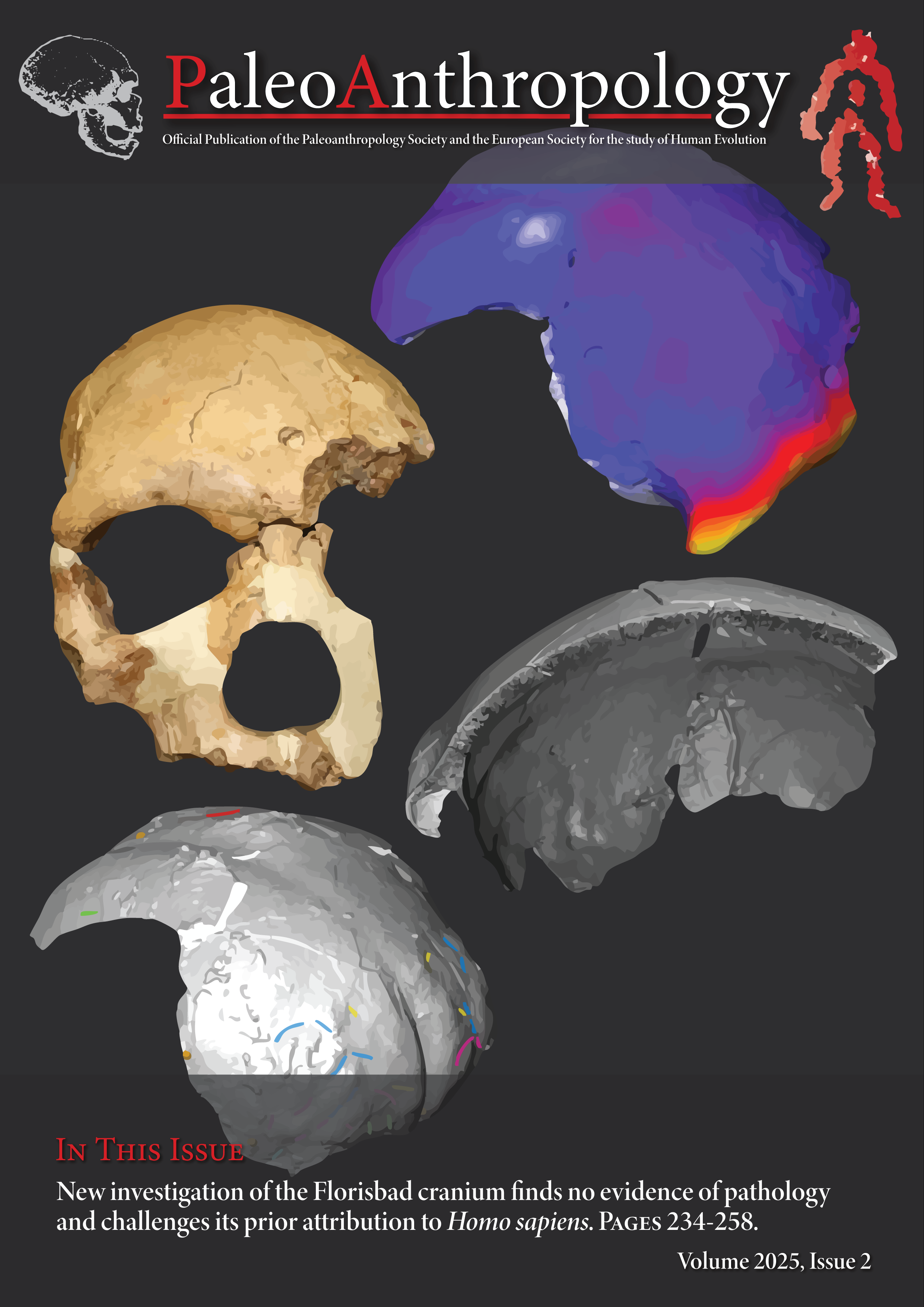Phylogeny of Homo and its Implications for the Taxonomy of the Genus Special Issue: What’s in a Name? Late Middle and Early Late Pleistocene Hominin Systematics
Main Article Content
Abstract
The genus Homo has a moderately high degree of morphological diversity, with about fifteen species proposed. It is debatable whether there could have been several species of Homo coexisting and sharing similar ecological niches, especially during the Chibanian (Middle Pleistocene). A thorough systematic evaluation of these 'species' is needed, and a reliable phylogeny with high taxon coverage is critical to such an endeavor. Here we evaluate the potential taxonomic assignments of several Homo fossils using a phylogenetic framework based on a large morphological data matrix. The phylogenetic analyses suggest that human evolution was not a gradual process and was not obscured by recurrent gene flow. Several species or clades coexisted. There are at least three distinct and temporally deep clades in later human evolution, and these three clades are all monophyletic groups and can potentially be considered valid species. The African and Asian Homo erectus/Homo ergaster populations form a paraphyletic group, with Dmanisi not belonging to the other Eurasian H. erectus populations. It may be possible to identify these African, Asian, and Dmanisi populations as three distinct species. The Chibanian African and European non-sapiens and non-Neanderthal hominins are a paraphyletic group, representing transitional forms of varying degrees. Although there are many taxonomic names for these hominins, a thorough revision of these names is needed.

